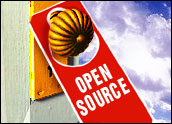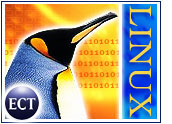
Pervasive Software has recently joined a burgeoning field of database vendors looking to capitalize on the open-source boom by way of commercial solutions.
Best known as a seasoned veteran of database infrastructure management solutions, Pervasive is now looking to take advantage of PostgreSQL’s solid database reputation by bringing a new services-oriented solution to the table, Pervasive Postgres. In doing so, the company joins Sybase, MySQL and others looking for bigger pieces of the growing midsize-and-up corporate open-source marketplace.
With Postgres, the company is wrapping a portfolio of offerings around the PostgreSQL platform, including annual subscriptions, which will include support, updates and value-added tools. Subscriptions will be available for a range of required service levels, from basic product updates to 24/7 live production support. Pricing will range from US$99/year per server for basic updates to $4,999/year per server for premium production support.
Central to acquiring new customers will be migration services providing five-day engagements with Pervasive professional services consultants utilizing Pervasive Data Migrator to rapidly migrate customers from Oracle, IBM DB2, Sybase, MySQL and other databases to Pervasive Postgres.
Enterprise Class Features
The Pervasive announcement comes on the heels of the release of PostgreSQL 8, which includes several enterprise-class features including a native Win32 binary for Windows-server installations. More important perhaps are functions known as tablespaces, savepoints and point-in-time recovery across all platforms.
Tablespaces allow database administrators to choose which filesystems will hold tables, indexes and entire databases, providing more control for performance and storage tuning.
Savepoints brings granular control over complex database transactions, allowing application developers more flexibility in controlling each incremental step in a data exchange with tables.
Finally, point-in-time recovery enables databases to be backed up on an ongoing basis to near-real-time, enabling faster data recovery in the event a restore is needed.
“Our efforts around PostgreSQL are twofold: improving usability so that it can be deployed by people other than early adopters and technology enthusiasts, and extending the performance and capability envelope,” said Lance Obermeyer, director of products at Pervasive.
Usability the Key
Obermeyer said the company’s initial release focused on usability, collecting and integrating multiple components together, such as a management console and connectivity drivers like Java Database Connectivity (JDBC). And they’ve created a simplified configuration tool.
“We’ve also wrapped them all under a common installer, simplifying the install process. These early improvements already improve a user’s first impression and probability for success [with PostgreSQL],” he added.
Kevin Yank, technical business director at SitePoint, a technology publisher located in Australia, believes it may be all about the upgrade path for administrators.
“The biggest headache we’ve found with PostgreSQL is managing it through version updates. It seems every time they release a significant update, the data format is incompatible with the previous version, and the database needs to be backed up, taken down, rebuilt, then restored,” Yank said. “This sort of labor-intensive maintenance cycle just isn’t practical for most real-world users. If Pervasive can address these sorts of issues in PostgreSQL, they will be onto a winner. If not, I expect they’ll flounder.”
Vying for Market Share
At first glance it may appear the company is also coming out swinging at MySQL — beating the release of MySQL 5 to the market by months. PostgreSQL already enjoys triggers, stored procedures and other features MySQL users have been rabidly awaiting in release 5. MySQL AB is expected to release a beta version of MySQL 5 during the next few months.
However, Obermeyer downplayed the notion of getting the jump on MySQL.
“If a user has architected his or her application to work within the constraints of MySQL, then they should stay there,” he said. “There will certainly be some that outgrow MySQL, and those users we welcome. Our primary targets, though, are users with production business applications that require mainstream features and rock-solid data integrity. Those will be migrations from proprietary databases or brand new applications that never could have worked on MySQL.”
Pervasive does not currently track its market share publicly — suggesting “it is difficult to estimate accurate market share numbers, since PostgreSQL is available through so many channels, most of which are untracked,” Obermeyer said.
One can keep up with PostgreSQL’s growth in the market by way of Sourceforge project statistics, however, as well as the project’s official home page. MySQL, meanwhile, has publicly stated that it sees around 20,000 downloads daily and consistently appears in database matrices with the likes of Oracle, IBM and Microsoft.















































